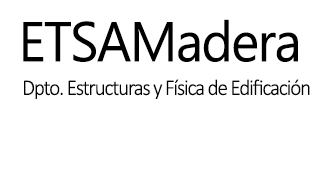Abstract
This paper describes theoretical and experimental work undertaken to obtain a structural model for assessment of historical Latin-American vertically laminated planked timber arches, as built by the Spanish, mainly in the seventeenth and eighteenth centuries. Many such arches still stand, and represent an important historical heritage. Following initial historical and construction studies, a structural analysis is being undertaken; the first stage is described here. Two wire frame analysis models are developed and assessed: a finite-element model using elastoplastic constitutive equations (implemented in SAP2000), and another model using limit analysis. An experimental programme is also conducted. The structure presents elasto-plastic behaviour with an important plastic range, which is a relevant and favourable property for a structure. The numerical elasto-plastic model shows good agreement with experimental results for the elastic range and deviations around 60% for the plastic range. The plastic model shows a deviation of around 40%, which is an important outcome at this stage. The models show the key problem of the structure: the transference of the bending moment along planks is poor, restricting its overall load-bearing capacity. Additional tests and more complex material models (including failure in tension perpendicular to the grain), using twodimensional and three-dimensional finite elements, are now under development to recalibrate the models presented.
https://doi.org/10.1680/stbu.14.00049

